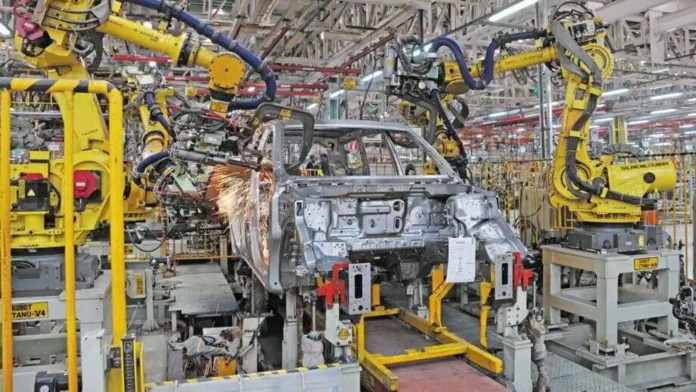DELHI, NEW DELHI: India’s manufacturing activity increased faster than expected in May, but stayed unchanged from the previous month, despite declines in other major exporting economies. Despite sellers passing on higher costs to purchasers, factory orders in India continued to climb.
As a result of cost increases being passed on to clients, the selling price increased to its highest level in more than eight and a half years, affecting overall company sentiment.
The S&P Global India Manufacturing Purchasing Managers’ Index (PMI) increased to 54.6 points in May from 54.7 points in April, but remained stable as sales rose due to a sharp increase in international orders, the highest in over 11 years.
In the PMI, a monthly barometer of industrial activity, the 50-point mark distinguishes expansion from contraction. S&P Global’s final manufacturing PMI, which was announced separately and was the first among major exporting economies, is considered a barometer for global commerce.
Despite another increase in selling prices, demand improved in India, according to the survey-based study, but firms were sceptical of the momentum continuing due to inflationary pressures. “While businesses appear to be focused on the here and now, the survey’s measure of business optimism reveals a sense of anxiety among manufacturers.”
“With panellists largely anticipating growth prospects to be hampered by acute pricing pressures, the overall level of mood was the second-lowest observed in two years,” said Pollyanna De Lima, economics associate director at S&P Global Market Intelligence.
In May, input costs increased for the twenty-second month in a row, with higher prices for electronic components, energy, freight, food, metals, and textiles reported by businesses. Inflation remained historically high, however it was somewhat lower than in April.
Companies were encouraged to continue their efforts to restore stocks and hire additional people as demand remained strong. Factory employment increased even further in May, reaching its highest level since January 2020.
In May, producers increased their input purchases, bringing the current expansion sequence to 11 months. Last week, the government announced various measures to lower inflation, including an 8-per-litre reduction in gasoline excise duty and a 6-per-litre reduction in diesel excise duty.
The Consumer Price Index (CPI) assessed retail inflation at an eight-year high of 7.79 percent in April, and it is projected to stay high in the following months. For the fourth month in a row, inflation has above the upper limit of the Reserve Bank of India‘s (RBI) tolerance zone of 2-6 percent.
The RBI hiked the repo rate by 40 basis points to 4.4 percent in an off-cycle policy review, the first increase in nearly four years. For the fourth month in a row, inflation has above the upper limit of the Reserve Bank of India’s (RBI) tolerance zone of 2-6 percent.
The RBI hiked the repo rate by 40 basis points to 4.4 percent in an off-cycle policy review, the first increase in nearly four years.
Follow and connect with us on Facebook, LinkedIn & Twitter

